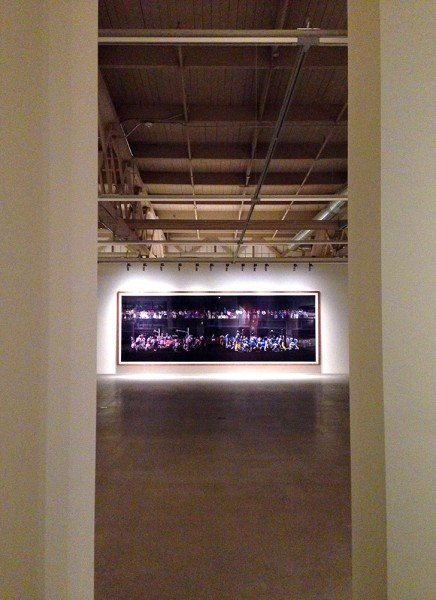But are not bloggers journalists?
“Journalism is dead,” he tweeted.
— Kevin Nguyen (@knguyen) October 3, 2014
But are not bloggers journalists?
“Journalism is dead,” he tweeted.
— Kevin Nguyen (@knguyen) October 3, 2014
Everyone is a photographer now, and that’s wonderful. We all document moments both important and mundane, scenes both amusing and stunning, creating a colorful whirlwind that turns into an extra layer of the fabric of life. Step into the serenely industrial galleries at Pier 24 in San Francisco, though, and you’ll be reminded that photography can also be art.
 A huge variety of photographic prints make up the current exhibition (“A Sense of Place,” open through May 2014), but it’s the gallery space itself that is most intriguing. Continue reading Pier 24 SF
A huge variety of photographic prints make up the current exhibition (“A Sense of Place,” open through May 2014), but it’s the gallery space itself that is most intriguing. Continue reading Pier 24 SF
Just a poignant note on how designing is a privilege, and important at the same time, by John McWade, publisher of Before & After Magazine. He writes of a reader writing in from Haiti, a farmer-cum-desktop publisher, who says:
“I am coming to believe that pleasing design needs no apology, even, if not especially, in scientific publications. Our societies are now at the stage that a great number of us can not only appreciate the pleasures offered by good design, but almost demand that artistic expression be placed on the same level as informational expression. I’m not sure why, but it has much to do with why we are human.”
And John notes:
Such contrasts these are! Here is a reader, a farmer, who has worked 15 years in a nation where half the children are undernourished and 1 in 10 will die, 7 of 10 adults are illiterate, half the urban population has no access to safe water . . .
. . . pause here for a moment . . .
. . . writing to a magazine subtitled “How to design cool stuff”. . .
. . . inspired by what we do.
What accounts for this? How does design even exist in such an environment, much less inspire?
You might look again at what you do. You sit with a full tummy in your warm office at a blank screen with an ad to make, and you’re thinking, “Jeez, I have to come up with something original and clever and it better be soon.” That’s not how to think. As a designer you have a privilege, one that others do not. It is the privilege of making visible that which others can only imagine, feel or think. When you do this, you open a window through which your audience can see, know and understand.
Full post here.
If I had gone to school for design, no doubt I would have come across this famous quote from Dieter Rams, one of the most influential industrial designers of modern society. Alas, it has taken me this long to discover his wonderfully succinct description of what is also my own design philosphy: “Less, but better.”
Dieter Rams, as head of design at Braun from the early 60’s into the 90’s, created many of the iconic products of that era, including the record player, radio, calculator and juicer designs we are all completely familiar with today.
Johnathan Ive, designer at Apple, is a big Dieter Rams fan, and it has been pointed out that many of Apple’s products, from their computers to iPods, draw from and are very similar to Rams’ Braun objects. The calculator in the iPhone is almost a replica of the his famous Braun calculator. Continue reading Ten Commandments
I was recently reminded of the saying, “Luck is the residue of design.” This quote* was the title of a lecture given in the 1950’s by Branch Rickey, former Major League Baseball executive. He was most famous for initiating the integration of major league sports by signing Jackie Robinson to the Dodgers in 1947.
I am a believer in this saying. How to put the concept to use is another question.
One can pretty easily design to have bad luck. For example: get drunk at a bar and drive home while speeding. High chance of bad luck finding you, in one of a myriad of ways.
Good luck is not quite so easy to run into. We don’t know in advance what juxtapositions will be useful to us, and it’s certainly not only high-minded, “good angel” decisions that allow for fortunate chance meetings or ideas.
My current best guess on how to design for good luck is to follow your own instincts. Make each decision your own, and make sure you are doing what you truly want to be doing, at every single moment over which you have control.
That way your residue trail will be something you can appreciate and be proud of.
*It seems the full title is actually “Luck is the Residue of Opportunity and Design,” which is a bit more obvious but less interesting.